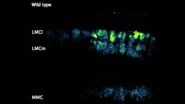(Press-News.org) Scientists have pinpointed a population of neurons in the brain that influences whether one drink leads to two, which could ultimately lead to a cure for alcoholism and other addictions.
A study, published in the Journal of Neuroscience by researchers at the Texas A&M Health Science Center College of Medicine, finds that alcohol consumption alters the structure and function of neurons in the dorsomedial striatum, a part of the brain known to be important in goal-driven behaviors. The findings could be an important step toward creation of a drug to combat alcoholism.
"Alcoholism is a very common disease," said Jun Wang, M.D., Ph.D., the lead author on the paper and an assistant professor in the Department of Neuroscience and Experimental Therapeutics at the Texas A&M College of Medicine, "but the mechanism is not understood very well."
Now, Wang and his team have helped come a little closer to that understanding. Using an animal model, the researchers determined that alcohol actually changes the physical structure of medium spiny neurons, the main type of cell in the striatum. These neurons can be thought of like a tree, with many branches, and many small protrusions, or spines, coming off of them. They each have one of two types of dopamine receptors, D1 or D2, and so can be thought of as either D1 or D2 neurons. D1 neurons are informally called part of a "go" pathway in the brain, while D2 neurons are in the "no-go" pathway. In other words, when D2 neurons are activated, they discourage action -- telling you to wait, to stop, to do nothing.
Although it is well known that the neurotransmitter dopamine is involved in addiction, this study goes further, showing that the dopamine D1 receptor also plays an important role in addiction. The team found that periodic consumption of large amounts of alcohol acts on D1 neurons, making them much more excitable, which means that they activate with less stimulation.
"If these neurons are excited, you will want to drink alcohol," Wang said. "You'll have a craving." That is to say, when neurons with D1 receptors are activated, they compel you to perform an action -- reaching for another bottle of tequila, in this case. This then creates a cycle, where drinking causes easier activation, and activation causes more drinking.
These changes in activation of D1 neurons might be related to the physical changes happening at the sub-cellular level in brains that have been exposed to alcohol. They have longer branching and more of the mature, mushroom-shaped spines -- the type that stores long-term memories -- than their abstaining counterparts.
Conversely, the placebo group, the ones not exposed to alcohol, tended to have more of the immature versions of the mushroom-shaped spines in D1 neurons of their brains. The total number of spines didn't change in the two groups, but the ratio between mature and immature was dramatically different between the alcohol group and the placebo group. This has important implications for memory and learning in drug addiction.
"When you drink alcohol, long-term memory is enhanced, in a way," Wang said. "But this memory process is not useful -- in fact, it underlies addiction since it affects the 'go' neurons." Because there was no difference in the number of each type of spine in the D2 (no-go) neurons of alcohol-consuming and control models, the researchers realized there was a specific relationship between D1 neurons and alcohol consumption.
"We're now able to study the brain at the neuron-specific and even spine-specific level," Wang said.
How do you determine which neuron, which type of neurons or which group of neurons is responsible for a specific disease? That's what the next part of the study tried to answer.
The alcohol-consuming animal models with the increased mature spines in D1 neurons also showed an increased preference to drink large quantities of alcohol when given the choice.
"Even though they're small, D1 receptors are essential for alcohol consumption," Wang said.
Furthermore, and perhaps most excitingly, when those same animal models were given a drug to at least partially block the D1 receptor, they showed much-reduced desire to drink alcohol. However, a drug that inhibited the D2 dopamine receptors had no effect. "If we suppress this activity, we're able to suppress alcohol consumption," Wang said. "This is the major finding. Perhaps in the future,
researchers can use these findings to develop a specific treatment targeting these neurons."
The study, which was co-authored with researchers from the University of California San Francisco, was supported by a grant from the National Institute on Alcohol Abuse and Alcoholism (NIAAA).
"My ultimate goal is to understand how the addicted brain works,"
Wang said, "and once we do, one day, we'll be able to suppress the craving for another round of drinks and ultimately, stop the cycle of alcoholism."
INFORMATION:
New research indicates that household food insecurity dramatically increases the likelihood of metabolic diseases in children, with many showing chronic disease markers before they graduate from high school. The study published today in the Journal of the American Osteopathic Association.
Food insecurity, defined as lacking access to food for an active, healthy life, is a preventable health threat. Yet, lack of basic access to food affects 14.3 percent of all U.S.
households and 19.5 percent of households with children.
"This is a looming health issue for the nation. ...
Brooklyn, NY - Xian-Cheng Jiang, PhD, professor of cell biology at SUNY Downstate Medical Center, has led a study identifying a new approach for lowering "bad" lipids in blood circulation, a critical means to combat devastating cardiovascular diseases such as atherosclerosis. The research was published in the online edition of Gastroenterology.
The team established that an enzyme called LPCAT3 (Lysophosphatidylcholine acyltransferase 3) is involved in the biosynthesis of phosphatidylcholine (PC), a type of compound lipid that is a major component of cell membranes. ...
Northridge, CA (September 2, 2015) - A study published Monday in the Journal of Health Care for the Poor and Underserved (JHCPU) concludes that ethnicity is associated with nutrient shortfalls of important nutrients. This study compared usual intake for essential nutrients between Non-Hispanic Black and Non-Hispanic White Americans using data from the National Health and Nutrition Examination Survey (NHANES), 2007-2010. This new analysis is consistent with previous research and confirms a continuing diet-related health disparity in the American population.
Nutrient shortfalls ...
LA JOLLA, Calif., September 2, 2015 - A new Sanford Burnham Prebys Medical Discovery Institute (SBP) study takes a step forward in understanding how similar, yet genetically unrelated neurodegenerative diseases, such as Alzheimer's disease, frontal temporal dementia, and progressive supranuclear palsy (PSP) are caused by the protein tau. The findings, published today in Neuron, create new opportunities to target this key protein that leads to the brain lesions found in patients with impaired motor functions and dementia.
"Our research shows how the abundance of a protein ...
Intentional burning in tropical forests has accounted for nearly 20% of all greenhouse-gas emissions since preindustrial times and will have major implications for Earth's climate and biodiversity in years to come. To better understand the complex dynamics surrounding these fires, a team of researchers led by Jennifer K. Balch, of the University of Colorado-Boulder, conducted a six-year controlled burn experiment in an Amazonian rainforest block located in Mato Grasso, Brazil. The results are described in an article that is part of BioScience's just-released Special Section ...
LA JOLLA--When you're taking a walk around the block, your body is mostly on autopilot--you don't have to consciously think about alternating which leg you step with or which muscles it takes to lift a foot and put it back down. That's thanks to a set of cells in your spinal cord that help translate messages between your brain and your motor neurons, which control muscles.
Now, for the first time, researchers have created a method to watch--in real time--the activity of those motor neurons. The new technology, developed by Salk scientists and published in Neuron, is ...
Georgia Institute of Technology researchers have developed a new artificially intelligent system that crowdsources plots for interactive stories, which are popular in video games and let players choose different branching story options.
With potentially limitless crowdsourced plot points, the system could allow for more creative stories and an easier method for interactive narrative generation. Current AI models for games have a limited number of scenarios, no matter what a player chooses. They depend on a dataset already programmed into a model by experts.
Using ...
Tropical Storm Fred is losing its punch. Satellite imagery shows that there are no strong thunderstorms developing in the tropical storm indicating that the storm is weakening.
The RapidScat instrument that flies aboard the International Space Station measured Tropical Storm Fred's winds on September 1 at 4 a.m. EDT. RapidScat saw that the strongest winds tightly circled the center and were on the northern side of the storm, as strong as 24 and 27 meters per second (53.6 mph/ 86.4 kph and 60.4/97.2 kph).
On September 1 at 13:00 UTC (9 a.m. EDT) the MODIS instrument ...
GeoSpace
High water tables can be a boon to crop yields
A high water table - usually a bane to crop yields - can provide much-needed water during drought and to crops planted in coarse-grained soils, found a new study published online in Water Resources Research.
3-D maps illustrate formation of the Hangai Dome in central Mongolia
Scientists used 1.7 million seismic wave measurements from 227 earthquakes across East Asia to create animated 3-D images of subsurface rock formations under the Hangai Dome in central Mongolia as part of their recent study accepted in Geophysical ...
A new study by WCS (Wildlife Conservation Society) has found that coral reef diversity 'hotspots' in the southwestern Indian Ocean rely more on the biomass of fish than where they are located, a conclusion that has major implications for management decisions to protect coral reef ecosystems.
Using data gathered over a 12-year period from nearly 270 coral reefs across the southwestern Indian Ocean, the WCS study found that the highest conservation priorities in the region should be reef systems where fish biomass exceeds 600 kilograms per hectare. This finding conflicts ...


